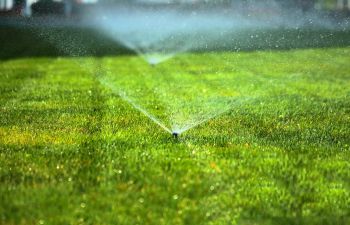
If you have recently laid fresh sod, congratulations on your new outside turf. However, while it may look manicured and easy to manage now, you need to take precautions to avoid ruining your turf addition. One of the most common new sod mishaps is overwatering. Catching an overwatering problem sooner rather than later could mean the difference in saving your investment.
New sod certainly needs irrigation to ensure it takes root. However, when too much water is added, your sod becomes vulnerable to damage.
Here are some warning signs that your new sod is getting too much water:
- Soggy Ground: Your sod should be moist but never soggy. Soggy sod will have a difficult time building a robust root system. If you walk on your sod and it leaves a depression or feels like a sponge, your sod is most likely getting too much water.
- Failure to Knit: In about 1 to 3 weeks after installation, your sod’s roots should knit into the soil. To check this, lift the corner of your sod. If it is easy to lift with little effort, your sod may not be knitting properly due to overwatering.
- Curled Blades: If you notice that your grass blades start curling, this is an indication they are getting more than enough water. Wait until the blades straighten out before turning on the sprinkler again.
- Brown Patches: If you have areas of dying grass or brown patches in your new turf, your sod may be victim to a fungus. Overwatered grass is especially susceptible to fungus, disease, insects and other damage.
It can be difficult to know exactly how to care for your new sod. To ensure you give your investment the best chance of thriving, consider asking the professionals of Pannone’s Lawn Pros & Landscaping. If you notice signs of excessive watering on your new sod, skip one or two of your watering sessions and call us for help if it doesn’t improve.
Posted on behalf of
1444 Buford Hwy
Cumming, GA 30041
Phone: (678) 294-0351
Email: pannoneslawnpros@gmail.com
Monday - Saturday 8:00 AM – 6:00 PM
